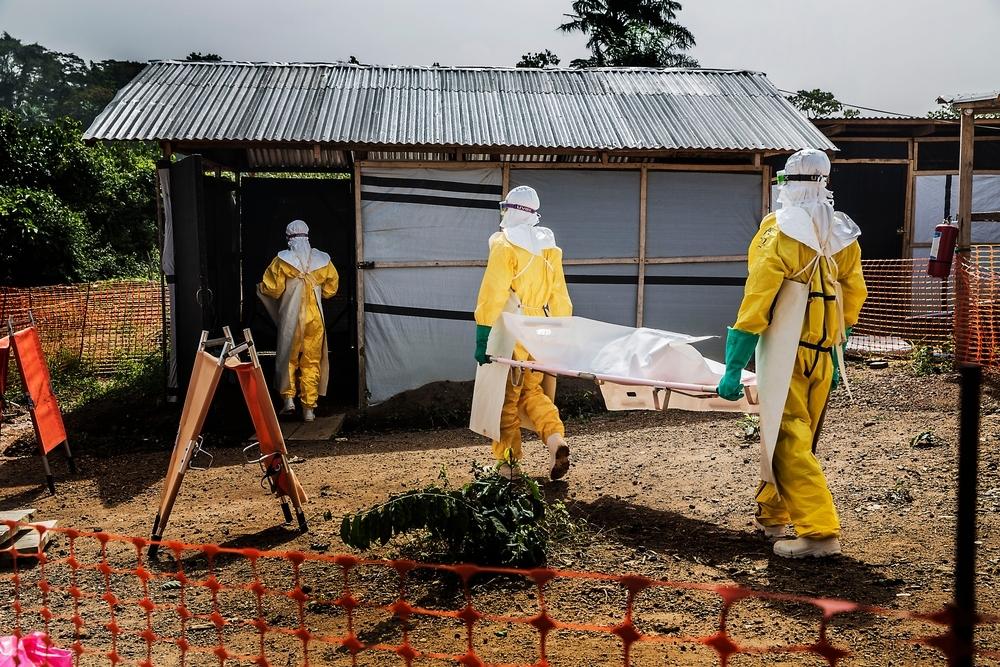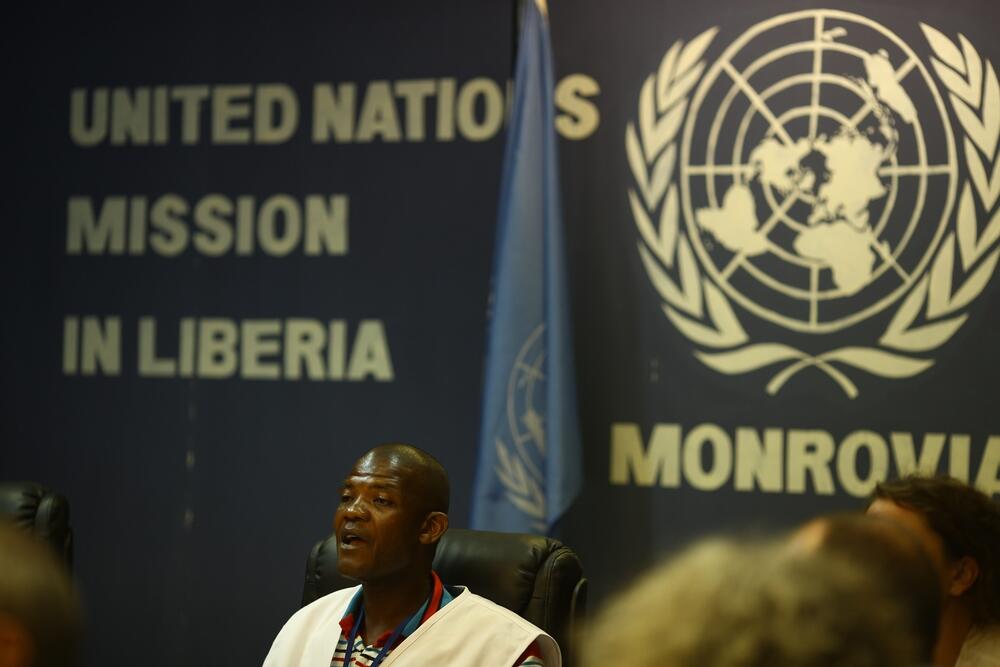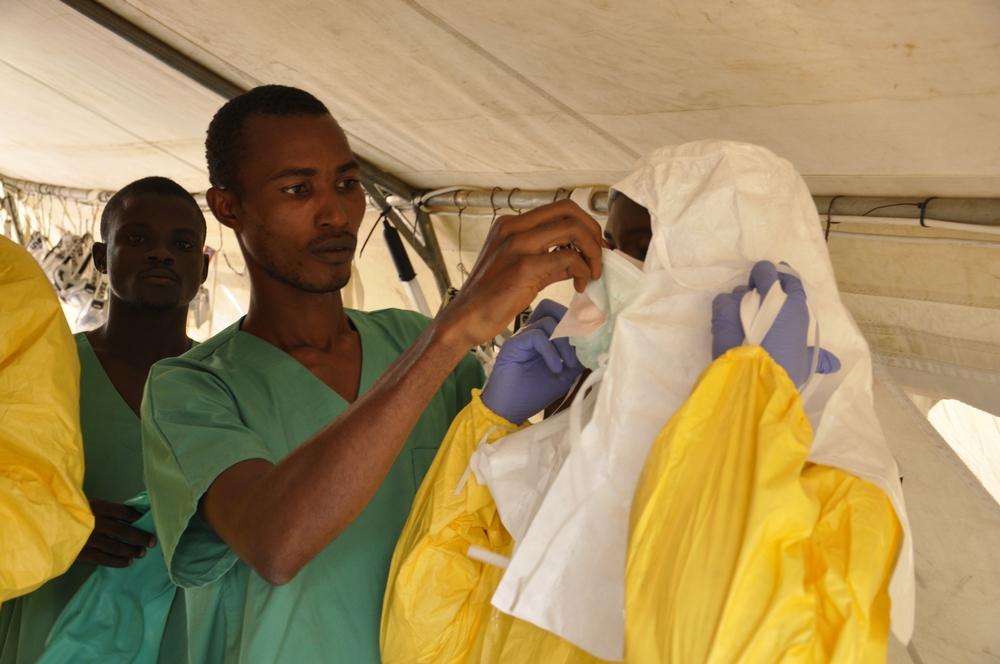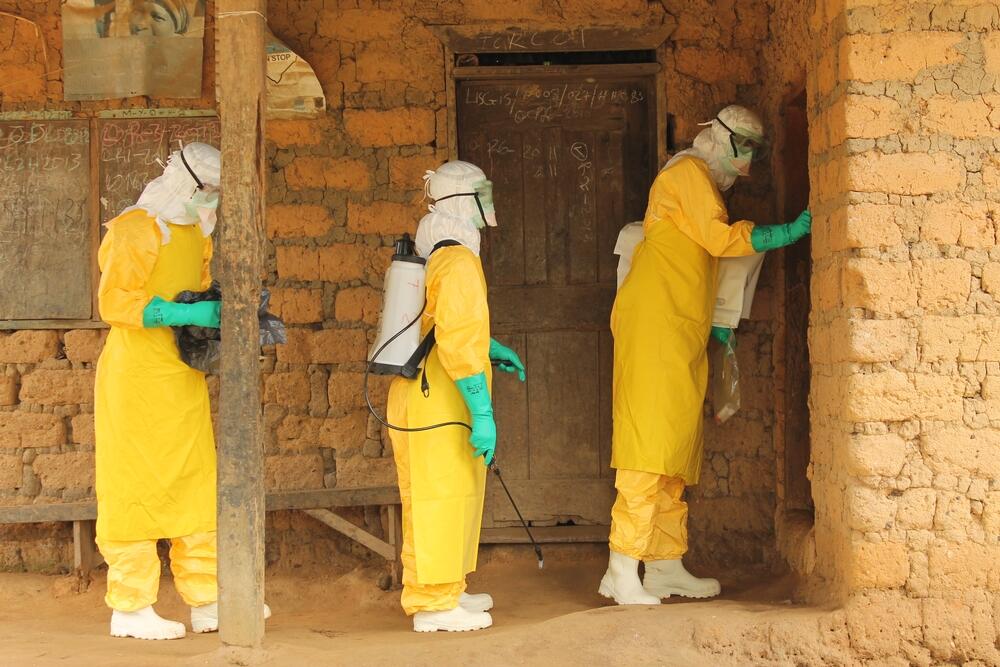Ebola: Ten years after the devastating West Africa outbreak, what have we learned?
Ten years ago, on 23 March 2014, Guinea declared an outbreak of Ebola. Ebola outbreaks were known to be dangerous, but small. Not this time.
It would take two years and more than 11,000 deaths before the epidemic was over.
Dr Michel Van Herp, one of the most experienced Ebola specialists at Médecins Sans Frontières / Doctors Without Borders (MSF), was involved in the response from the very beginning.
Here, he looks back at the largest outbreak in history and answers five key questions.
1 | What happened 10 years ago?
When we read the reports of people dying of an unknown disease in Guinea, early in 2014, we thought this was probably an outbreak of Ebola. Even if that disease was extremely rare in West Africa, so we sent in our Ebola team on the ground.
At that time, MSF was one of the very few organisations with experience in Ebola outbreaks… and it became clear that this outbreak had been slumbering for months and was already present in more places than anybody was used to dealing with.
The outbreak happened in a place in the world where no one expected Ebola, in an area that didn’t interest the authorities, and no one was ready to deal with it.
It took governments, UN agencies and aid organisations a very, very long time to take the outbreak seriously.
MSF frantically rang the alarm bell, multiple times, but nobody seemed to listen.
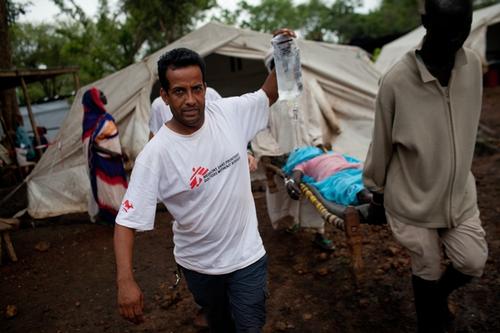
Help us prepare for the next emergency
2 | Why was this outbreak different?
Never had Ebola outbreaks happened in so many countries at the same time. The virus spread in Guinea, Sierra Leone and Liberia, but there were also cases in Senegal, Mali and Nigeria. It was also the first time that countries like Italy, Spain, the UK, and the USA, had cases of Ebola.
The scale of this epidemic was absolutely unheard of.
When it was finally over, in March 2016, more than 28,000 people had been reported to be infected, of which 11,000 died. Before this epidemic, the largest Ebola outbreak had 425 infected people!
Everybody, including MSF, was completely overwhelmed by this outbreak.
3 | Was the response to the outbreak different too?
For almost six months, the world tried to ignore this outbreak. Only by the end of the summer of 2014, did other governments and aid organisations finally start to help.
At the time, there were no treatments for Ebola. Patients would be admitted to an Ebola clinic, mainly to avoid infecting other people.
In earlier outbreaks, a family member could accompany the patient. But in 2014, to admit the huge number of patients, very big structures had to be built. The safety procedures had to be extremely strict and it was impossible to allow family members. This large-scale approach scared patients and their families.
By the end of 2014, dozens of aid organisations, most of them inexperienced with Ebola, were involved in different aspects of the response. The coordination of all those organisations, in multiple places in multiple countries, was extremely challenging.
Some governments turned to authoritarian tactics to force patients and their families into compliance. That scared them even more. The focus on the patients and their families, which had been so key to containing previous outbreaks, was completely lost in the enormous machine that the Ebola response had become.
4 | Did we learn anything from it?
Many of the things that we consider ‘lessons learned’ are things we knew before 2014, but that were forgotten. But we have also learned new things.
We learned how we could take a simple, oral swab of people who had died, to test whether they had died of Ebola. This allowed us to better understand the dynamics of the epidemic.
We also organised clinical research and discovered a good vaccine against the Zaire strain of Ebola. And we learned more from organising these clinical studies so that we were faster during the 2018 Ebola outbreak in the Democratic Republic of Congo (DRC). In the DRC outbreak, we then found treatments with antibodies for the Zaire strain of Ebola.
5 | What needs to happen in future outbreaks?
There are very concrete things we can improve. We should again allow a family member to accompany a patient in the Ebola clinic. We can protect them better now, with vaccination and drugs for pre-exposure.
Very sick patients should receive an antibody treatment much faster. Antibodies can be real life-savers and the sooner a patient receives them, the better they work. We must adapt our models to make the best use of this option.
And, we need to continue looking for other treatments. The Ebola virus can provoke an inflammatory response that is so strong that it can kill the patient. If we had a drug to calm down that inflammatory response, we would save more Ebola patients.
We also must improve the follow-up of patients after their recovery. The virus can linger in the brain, the eyes, and the testes of survivors. Another type of drug, antivirals, can clean up the virus from these places. And six months after their full recovery, Ebola survivors should get a shot of the vaccine, to give their immune system another boost.
In the last ten years, we have certainly made errors when we responded to Ebola outbreaks. Some errors were forced, and some were unforced. But in general, we clearly have made progress, and there are good options for even more progress.
The odds for a patient with Ebola in the next outbreak will be much better than they were ten years ago.
MSF and Ebola
Ebola is one of the world’s deadliest diseases.
It is a highly infectious virus that can kill up to 90 percent of the people who catch it, causing terror among affected communities.
Ebola is so infectious that patients need to be treated in isolation by staff wearing strict protective equipment and clothing.
